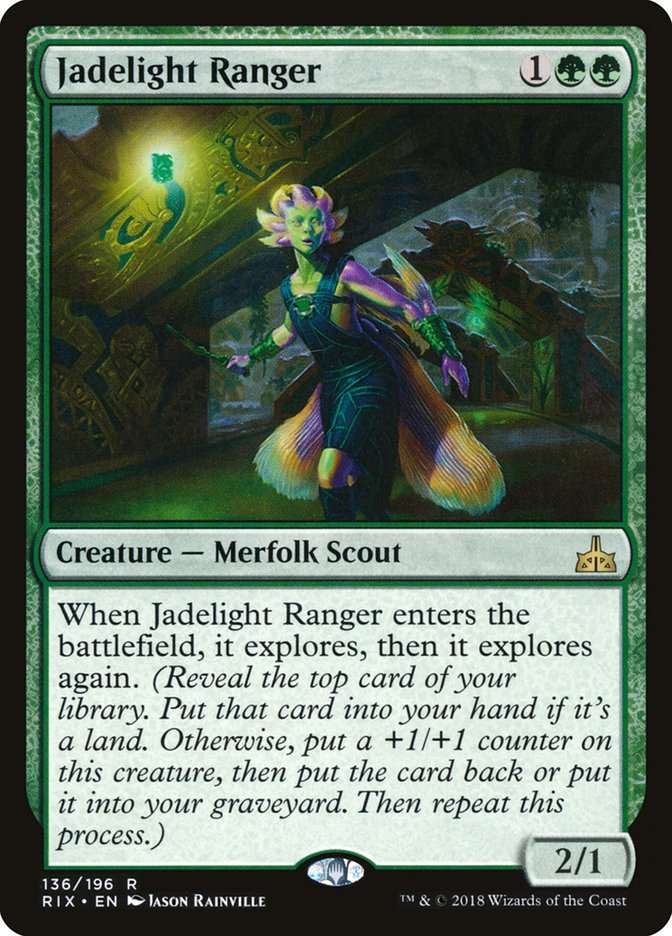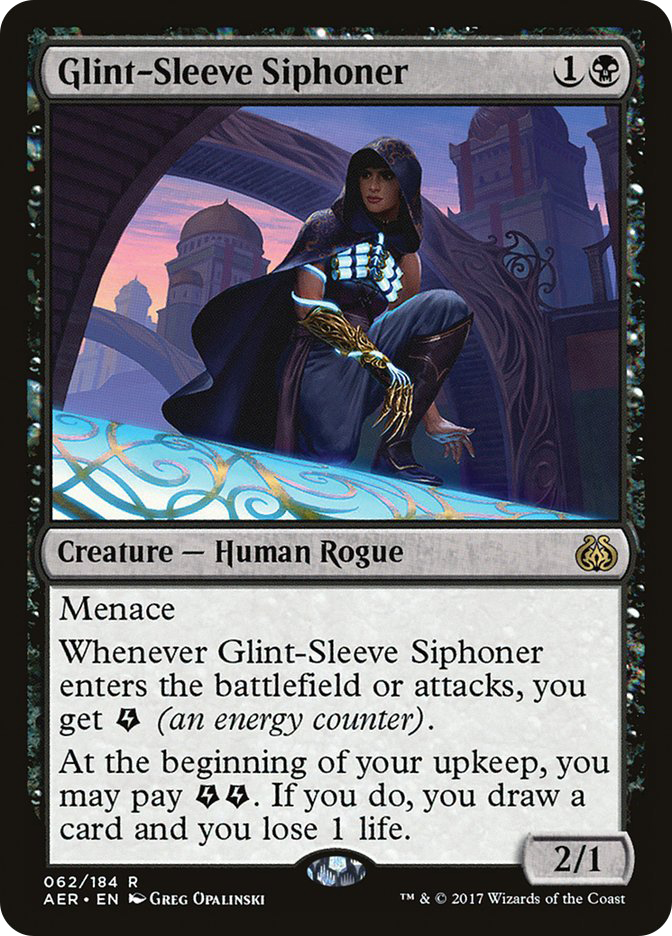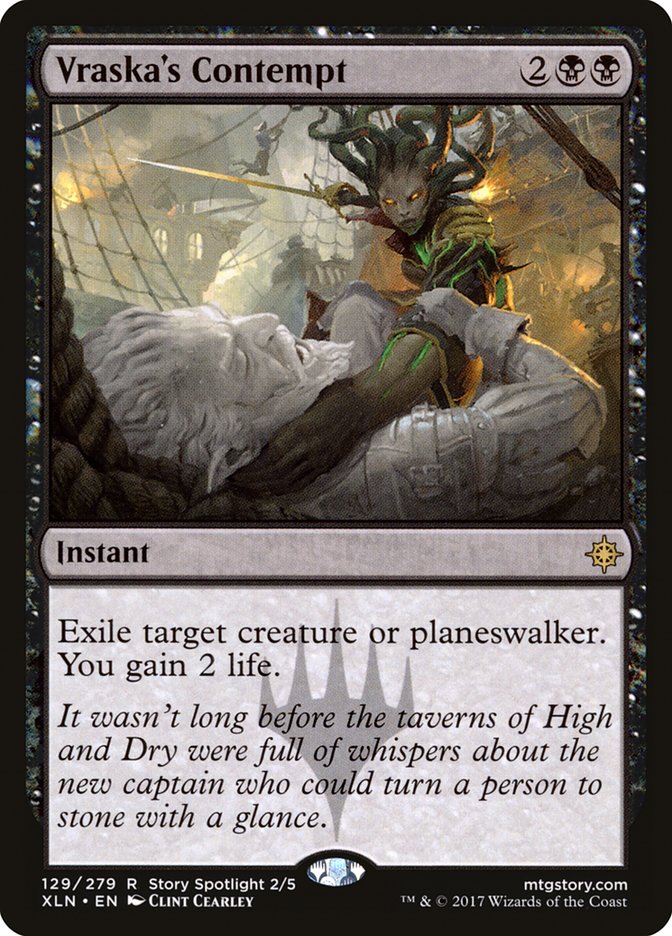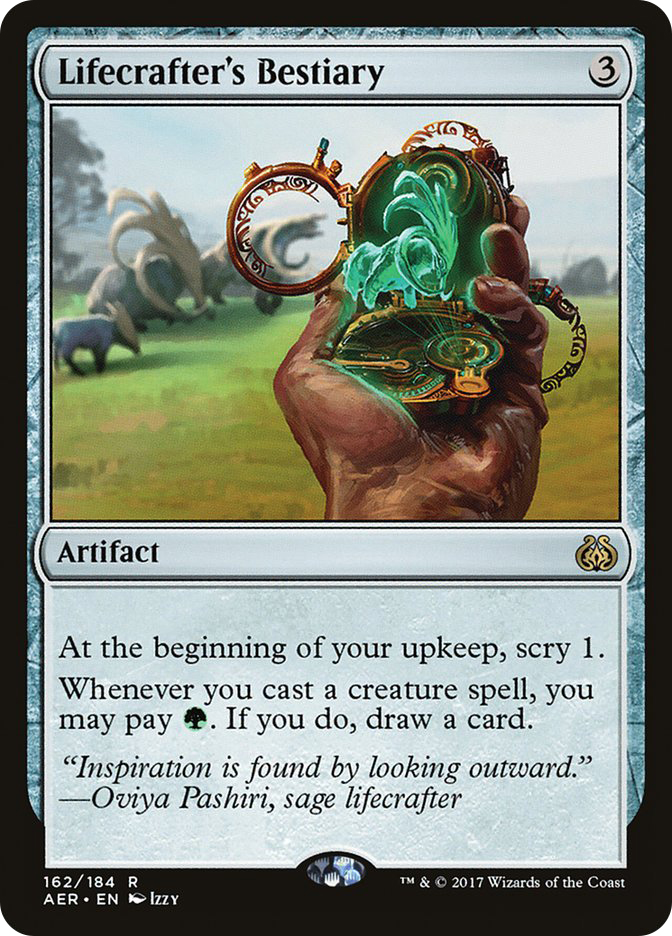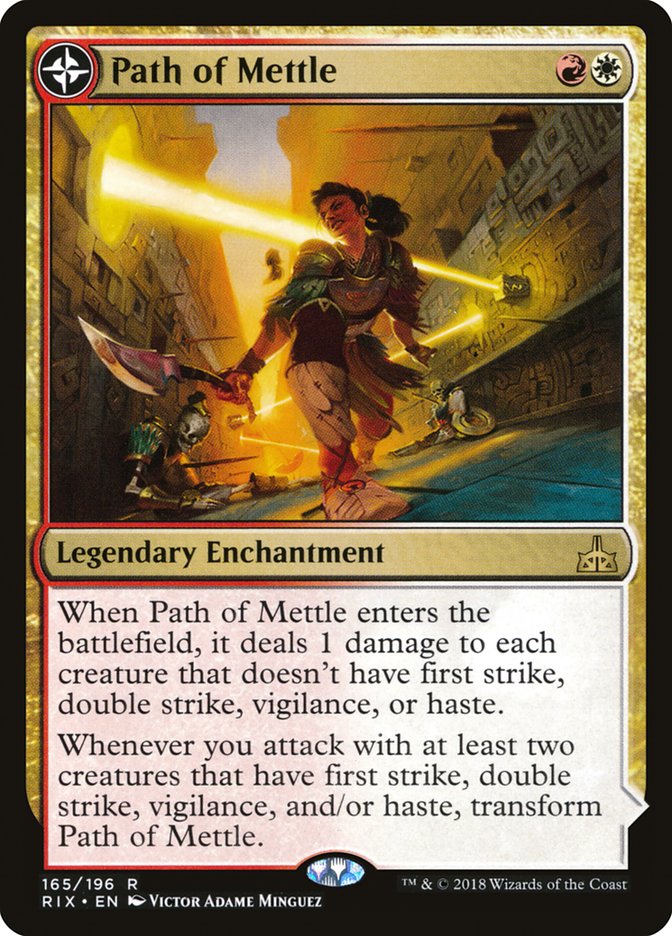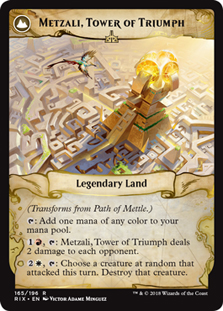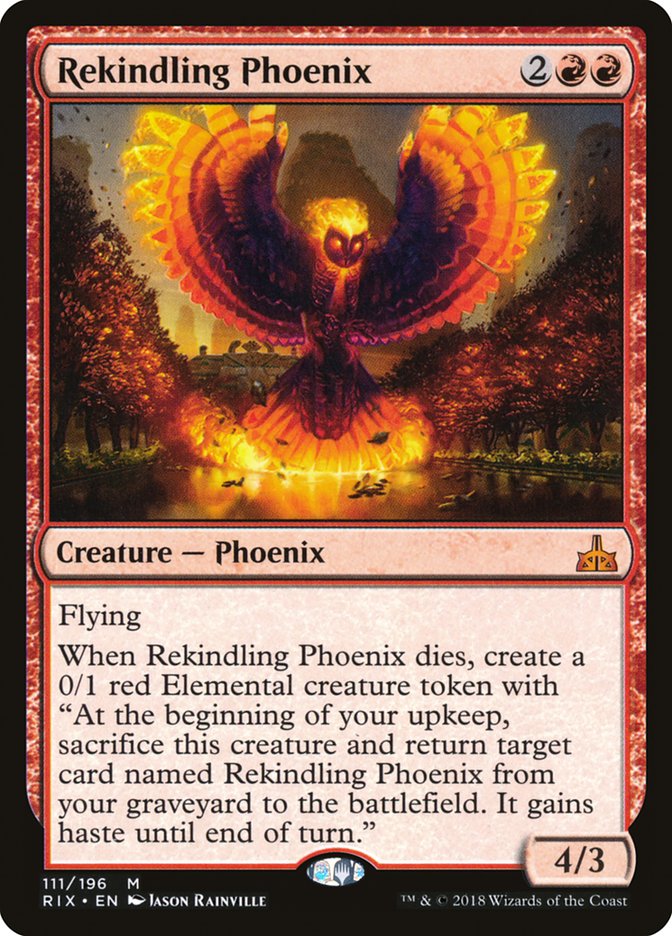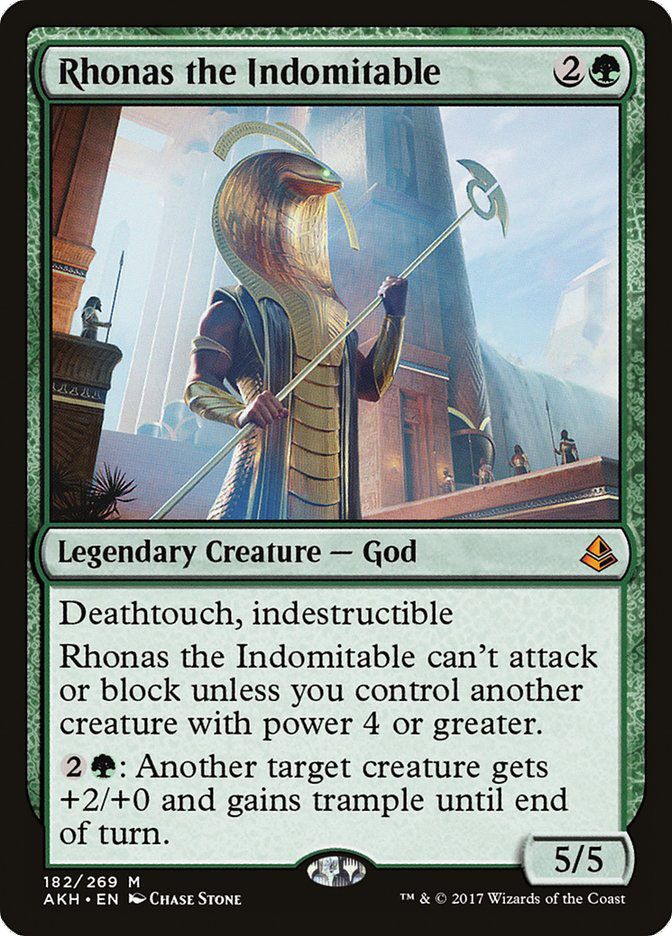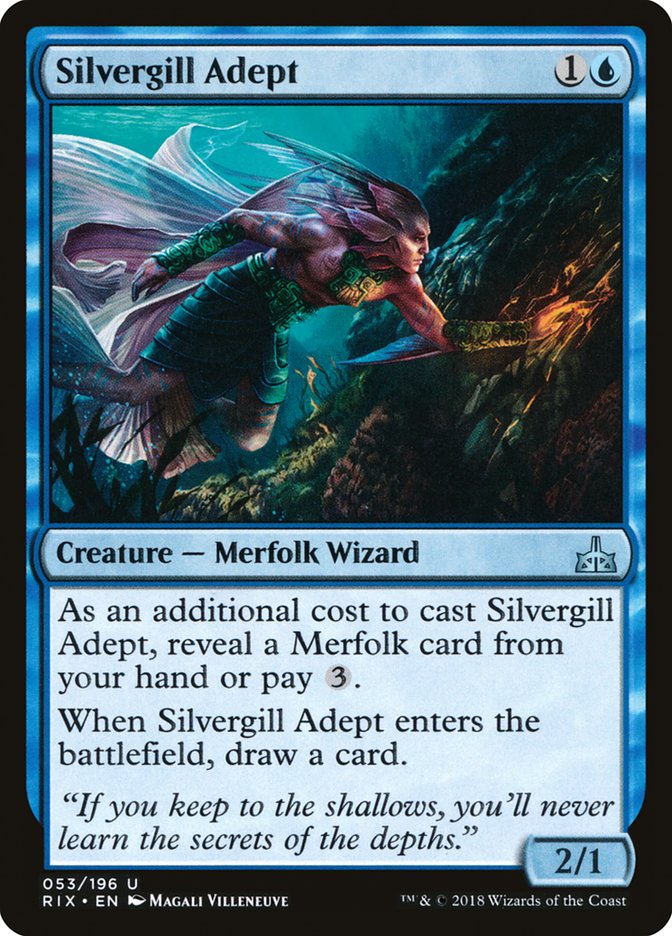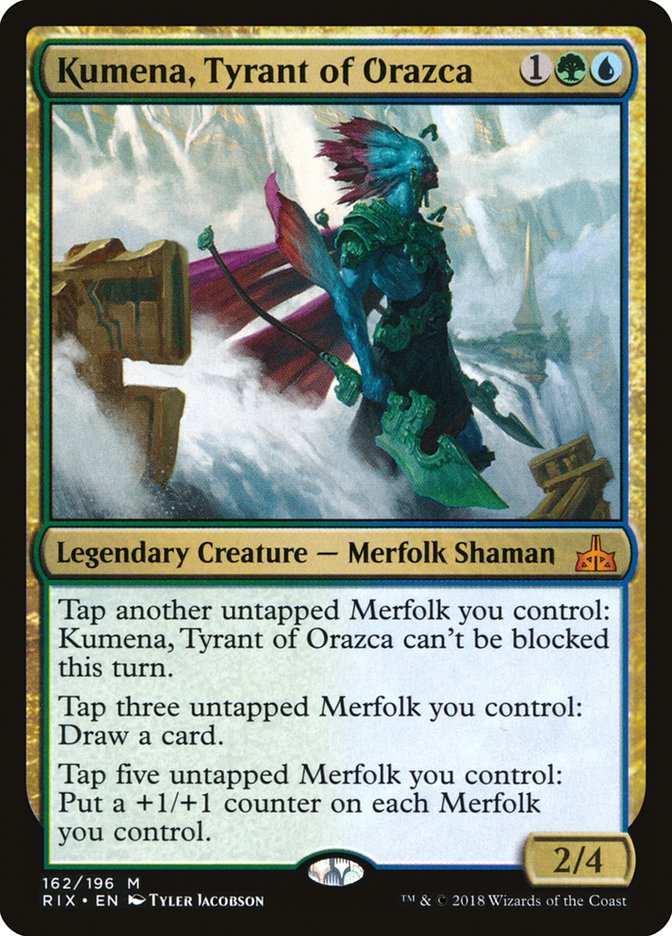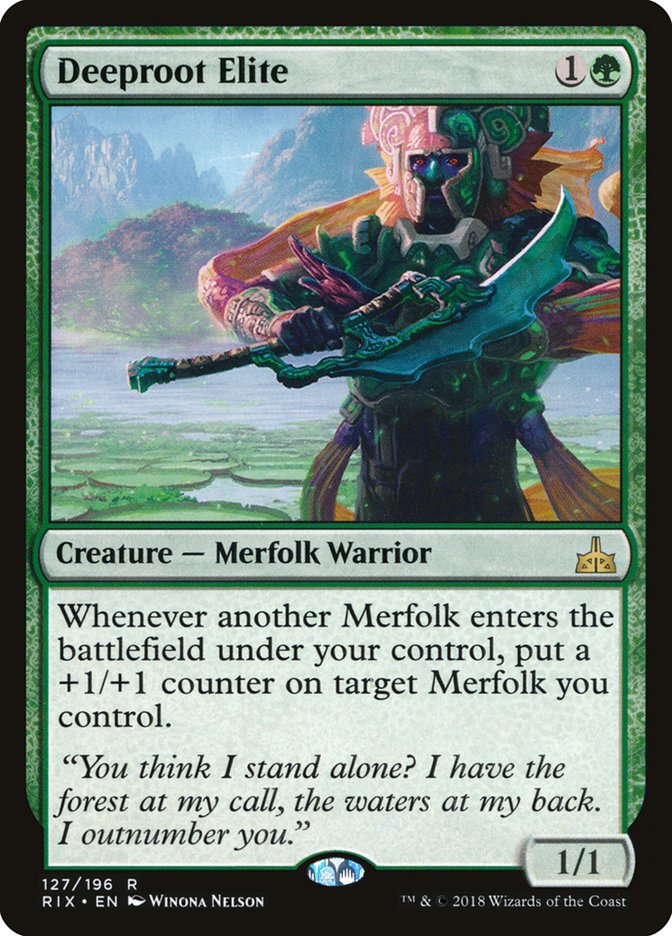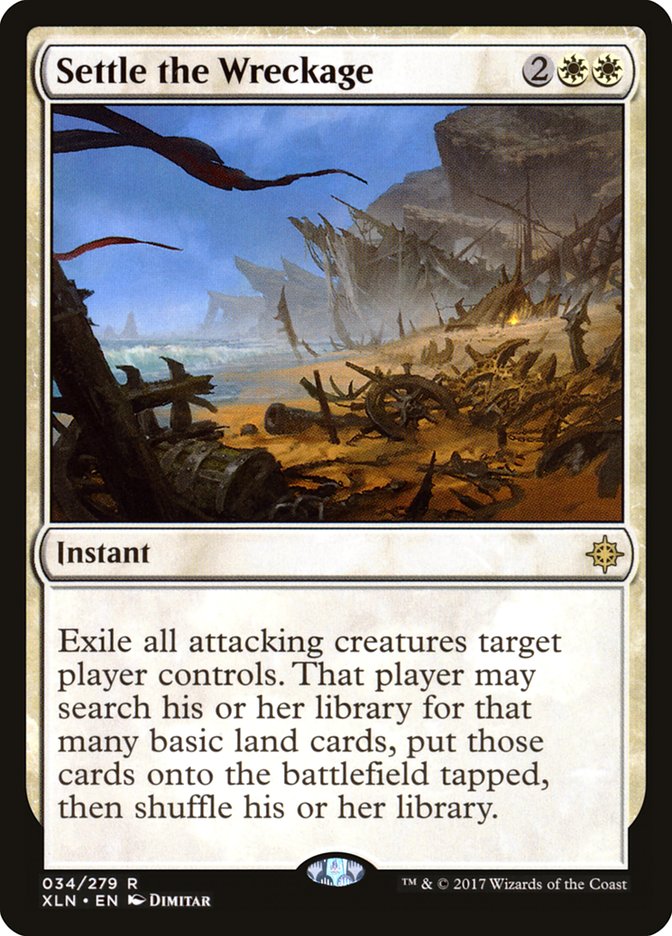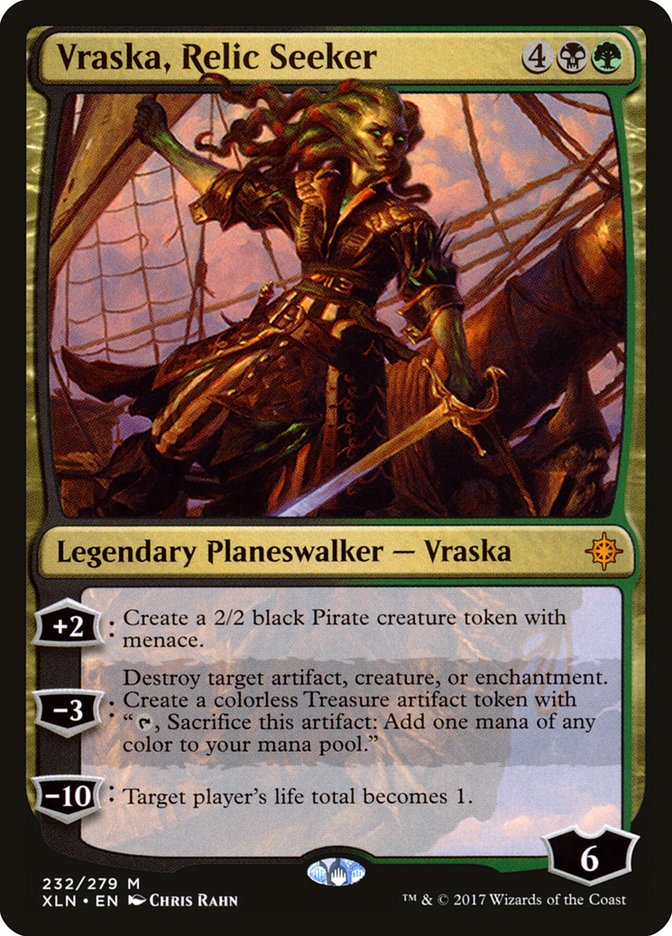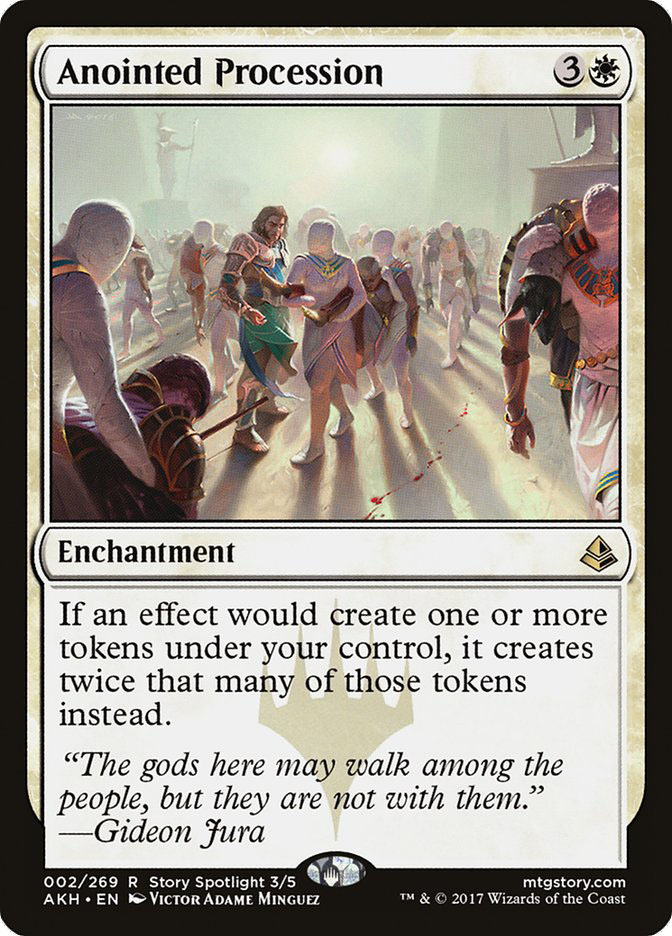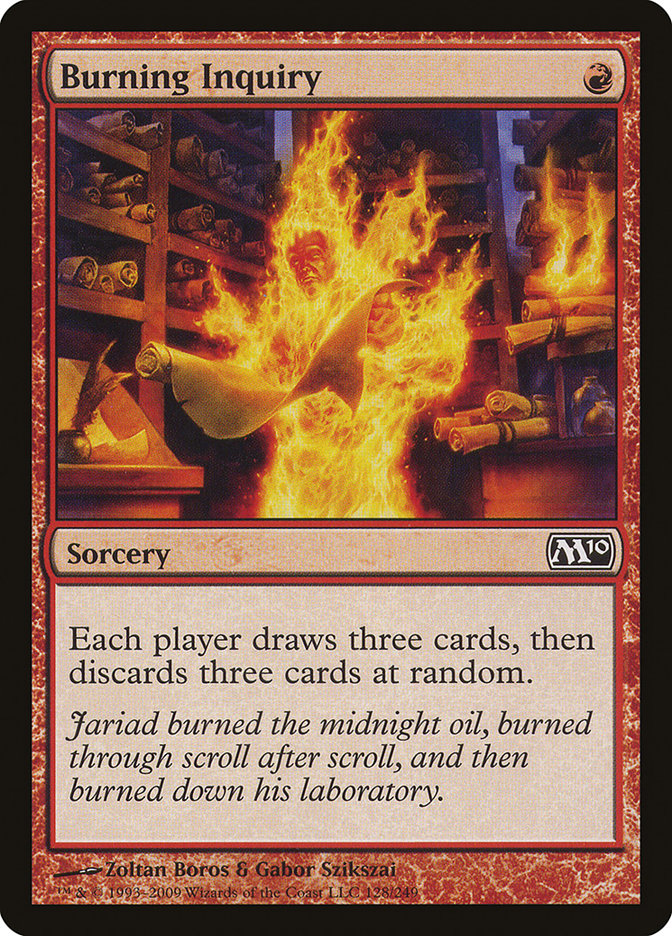So, uh, it’s been kind of a big week in Magic.
Since my articles run on Monday mornings, I haven’t had a chance to react
to the bannings yet. You’ve probably read a few thousand words on the topic
at this point, though, so I’ll keep my thoughts brief.
Even though these bannings came on the heels of the Aetherworks Marvel,
Smuggler’s Copter, Felidar Guardian, and Emrakul, the Promised End
bannings, they feel different to me. Marvel and Guardian were each half of
a broken combo, and neither deck had even a prayer of surviving the
banning. Smuggler’s Copter and Emrakul had kind of the opposite
problem-there wasn’t a single dominant deck, they were just ubiquitously
format-warping.
Attune with Aether, Rogue Refiner, Ramunap Ruins, and Rampaging Ferocidon
aren’t broken combo pieces, and they weren’t especially format-warping. If
WotC had wanted to nuke Energy and Ramunap Red from orbit, they could have
done that by banning cards like Hazoret the Fervent, Longtusk Cub, Whirler
Virtuoso, or even The Scarab God. Instead, they attempted to power down
both decks just enough to open up the format and allow Rivals of Ixalan to make an impact. By not banning any expensive
mythic rares and ensuring that the FNM crowd didn’t have to build a whole
new deck from scratch, WotC tried to give everybody what they wanted: a
fresh Standard format that didn’t involve folks being forced to throw their
expensive deck in the garbage.
Obviously, WotC can’t always thread the needle like this. There was no way
to stop the Saheeli Rai + Felidar Guardian combo without banning one of its
two combo pieces, for example. But if this banning is considered
successful, it opens up the possibility of WotC making a similar
proclamation every year or so-a second “rotation,” if you will, to keep
Standard fresh near the midway point by taking the format’s best deck or
two down a bit without obliterating it. Hearthstone does stuff
like this all the time by issuing card errata, and it might simply be a
necessity in an era of Magic where creating a truly diverse metagame on
Standard’s top tier continues to elude R&D.
I’m not saying that this is necessarily the best solution, and I’d love to
see Standard succeed without regular power level management bannings, but I
wouldn’t be shocked if last week’s event was the start of a longer trend.
And if so, the financial implications would be quite interesting.
My initial reaction is that it would cause Standard’s top staples to be
worth less, overall-uncertainty breeds uncertainty-but the truth is that
nothing buoys the price of Standard cards like a good format that lots of
people want to play. This created an odd paradox where The Scarab God and
Hazoret the Fervent have actually increased in value this week despite
their natural homes getting hit with major bans. In fact, unless you own a
lifetime supply of Rampaging Ferocidons, the bannings almost certainly
increased the value of your Standard collection-even if you were an Energy
or a Ramunap Red player.
Cool, right?
Anyway, enough about the far future. Let’s take a look at where Standard
finance is heading over the next couple of weeks.
I usually talk about analyzing Standard’s week one results with a grain of
salt (it’s only one tournament, after all), but this week we’re going to
have to use, like, a whole dump-truck full of salt. The SCG Dallas Open was
Team Constructed, so the Modern and Legacy matches carried exactly as much
weight as the Standard games did. I was happy that the SCG coverage folks
decided to feature a lot of the Standard games, which gave me a lot of time
to see the new cards in action, but I still don’t have a great handle on
which of the format’s newest strategies are rising to the top and which are
still just hopefuls.
Since running down the Top 8 decks seems misleading this time around, I’m
just going to highlight most of the different Standard archetypes that were
floating around the SCG Dallas Open as well as on MTGO over the last couple
of days. This will give me an excuse to highlight cards that look like they
might start seeing more play in our new post-ban Standard environment.
One thing I think we can safely say: this new Standard format looks
awesome. Things might tighten up over the next couple of weeks, but if SCG
Dallas is any indication, there are loads of viable strategies, starting
with slightly powered down versions of the previous format’s best deck:
Temur & Sultai Energy
One of the important things to remember after a ban is that not everybody
has the resources to jump straight into a brand new deck. While some Energy
players will take a look at the next couple weeks of tournament results and
pick whichever deck seems to have the edge, a lot of them are simply going
to look for the best way to update their existing deck and keep playing.
Enter Jadelight Ranger. It’s sold out at $12 right now, and a large part of
that is because it can do a pretty good Rogue Refiner impersonation in
decks that used to rely on that card. It remains to be seen if Energy can
survive simply by downgrading their Refiners to Rangers and replacing
Attune with Aether with a couple more lands and a few other utility cards,
but this is where a lot of players are going to start. It’s going to keep
Jadelight Ranger’s price fairly high for a couple of weeks even if it
doesn’t find any other homes. If it does (I believe it will) than this will
be an $18-$20 card. Jadelight Ranger is already pretty expensive, but
buying high seems like the right call here.
While a lot of the Temur Energy decks are sticking to those minimal
changes, many of the Sultai brews are also starting to lean on Glint-Sleeve
Siphoner. This has caused Glint-Sleeve Siphoner to jump from near bulk to
$4. I’ve also been seeing Glint-Sleeve Siphoner show up in Grixis Energy
and the other Scarab God decks. At this point it seems like one of the best
multi-deck utility creatures in the format.
Price memory is keeping Glint-Sleeve Siphoner in the $5 range, but we’ll
see how long that lasts. If it was a new card in Rivals of Ixalan,
it’d be approaching $10 by now. I’m probably not going to spec on a bunch
of these at $4, but I am going to make sure that I have a personal playset
going forward, and I bet it’ll end up in the $6-$7 range at least.
It also looks like The Scarab God is going to be more important in Energy
now than it was before the banning. It looks like Sultai Energy is a bit
better than Temur Energy now, and those Sultai Energy decks are moving
toward a full four sets of The Scarab God. That card was the biggest gainer
of the week on MTGO, and the paper price is going to follow.
Vraska’s Contempt is worth a couple of words as well. Black seems to have
improved in the new Standard, and the other good removal spells are more
important now that Harnessed Lightning has lost some of its utility. It’s
great against decks where the threats are going in the format right now
(more Scarab Gods, fewer Bristling Hydra) and a lot of these decks are
moving toward the full set of four. At $8, I’m not sure how much higher
Vraska’s Contempt has to go, but the card is currently spiking on MTGO, and
there’s a shot it’ll spend a couple of weeks in the $10-$12 range before
things start to settle down again.
If you want a sleeper pick out of this deck, check out Lifecrafter’s
Bestiary. Last week, it was another card that Brad Nelson talked about
in his article,
and I’m pretty sure that showed up in a couple of the Monsters brews over
the weekend as well. It might just be a sideboard card or a main deck
two-of, but it’s only $1.25 right now, and that’s pretty much its floor
based on casual and Commander demand. I’d grab a couple of sets just in
case.
Grixis Midrange (& U/B Control)
There’s not a lot to talk about here-this is a “good stuff” deck that
combines some of the better cards from the old Sultai Energy decks with
some control pieces, like Supreme Will and Glimmer of Genius.
Financially, the key cards are Glint-Sleeve Siphoner, The Scarab God,
Vraska’s Contempt, and Torrential Gearhulk. We talked about the first three
already, but Torrential Gearhulk is starting to see a bit of an uptick
again as well-no surprise, since this card has been at least somewhat good
in pretty much every iteration of Standard since it was printed. It’ll
probably tick back toward $20 again soon.
The U/B Control decks are pretty similar, though they eschew the red and
some of the energy stuff for a more straight The Scarab God/Torrential
Gearhulk/Search for Azcanta plan. Yep, all of these cards are still looking
quite good in the new format.
Mono-Red Aggro (& R/W, R/B Aggro Variants)
Much like the Energy mages, a lot of devoted Mono-Red Aggro players aren’t
going to abandon their deck simply because they lost a land and a sideboard
card. Mono-Red should still have enough gas to compete, even if their reach
isn’t as good as it used to be.
To me, the real question is whether or not this deck will remain mono-red
or end up shifting toward R/W. I was wrong when I
poo-poo’ed Path of Mettle in my Rivals of Ixalan set review; I
just didn’t think that it was worth jumping through hoops to get a slightly
better Ramunap Ruins on the battlefield. Now that Ramunap Ruins is gone,
however, Path of Mettle seems a whole lot better.
$4 is still a little bit high for a rare that hasn’t proven itself and is
only going to be good in one deck, but I don’t want to ignore how good Path
of Mettle has looked in the games when it flips early on. This isn’t going
to be the next Search for Azcanta or anything, but it might end up in the
$7-$8 range for a while. It could go even higher if R/W ends up taking
Mono-Red’s place in the meta.
Oh-and Hazoret the Fervent is still really, really good. Don’t expect this
one to come down in price anytime soon.
Mardu Vehicles
It’s back, with
more copies in Day 2 At #SCGDFW
than any other deck in Standard!
Sure, Mardu Vehicles no longer has Gideon, Ally of Zendikar, but Toolcraft
Exemplar is better than ever and Heart of Kiran is still an absurdly
powerful Magic card with a very favorable price history. Heart of Kiran
doubled in price on MTGO over the weekend, but as of this writing there are
still a few dozen copies available on SCG for just $5. This is a mythic
rare that used to be worth $30, so price memory could push it pretty darned
high if a Heart of Kiran deck ends up performing well at some point over
the next couple of weeks. (It sees play in G/R Monsters, too.) And with
Whirler Virtuoso taking a backseat, that’s not exactly a bold claim. I’m
grabbing a set ASAP.
R/B Midrange
I’ve loved Rekindling Phoenix since the moment I saw it, and it’s nice to
see a couple of brews running around that take advantage of the full four
copies. Standard is looking pretty midrangey at the moment, and Rekindling
Phoenix is exactly the sort of card that feasts in formats like this. I
snagged my copies for $8 during the pre-order period, but $18 still might
end up seeing like a bargain if the Phoenix ends up a multiple tier one
lists. I’d consider trading for these now if you want to build around it
and you haven’t secured your copies yet.
From a spec perspective, Treasure Map is the more interesting card in this
deck. They’re still retailing for just $3.50, and this card has never been
lower than $2 due to casual demand and the cool design. That’s the kind of
high floor that I love as a conservative speculator. Treasure Map is a
four-of in this deck, and it’ll double in price if this deck continues to
do well.
It’s also worth noting that Chandra, Torch of Defiance is key in R/B
Midrange, as well as pretty much every aggressive red deck in the format
right now. Ramunap Red may be gone, but it’s possible that Chandra is
actually in a better place now than she was a week ago. Chandra, Torch of
Defiance spiked pretty hard on MTGO over the weekend, and I expect the
paper price to start ticking up a bit too.
Temur & G/R Monsters
This is another sweet new midrange red deck with Chandras, Glorybringers,
and a full set of Rekindling Phoenix, only it runs green instead of black
for cards like Jadelight Ranger (one of the most played cards all weekend)
and Rhonas the Indomitable.
Brad Nelson discussed Rhonas in his post-ban Standard article last week
, and he was proven right at SCG Dallas-the card was all over the coverage
last weekend, and it often looked very impressive. Rhonas has shown up in
Standard before, and it’s just a $7 mythic right now. You could sneeze and
get this card up to $15, so it’s one of my top buys coming out of the
weekend.
Oh-and this is another Heart of Kiran deck, too. Brennan DeCandio ran three
of them in the main deck of his G/R Monsters build. If you’re not gonna buy
Rhonas, at least grab some of these. They’re good again.
U/G Merfolk
It’s no surprise that people desperately want Merfolk to be good in
Standard. Merfolk has been one of the most popular Modern and Legacy tribes
for years, and Silvergill Adept is an objectively great Magic card.
I’ve seen a couple different U/G Merfolk variants kicking around MTGO, but
they all seem to run four copies of Deeproot Elite and Kumena, Tyrant of
Orazca. As a result, Kumena is up to $25 and Deeproot Elite has climbed to
$7. If Merfolk is legit, and it looked pretty danged good at the SCG Open
this weekend, these are fairly reasonable prices. Since the deck mostly
relies on commons and uncommons, like Merfolk Branchwalker and Merfolk
Mistbinder, the deck’s small handful of rares and mythics have a higher
than average ceiling. It’s possible that Kopala, Warden of Waves and
Deeproot Champion will end up in some future version of the deck, but I’m
pretty bearish on them for now.
Unfortunately, this was the only dedicated tribal deck that showed up in
Dallas. Sorry Pirate, Dinosaur, and Vampire fans-I’m selling those cards
for now, and I’ll buy back in if things change at some point over the next
few weeks.
U/W, Bant, and Esper Approach
Approach of the Second Sun might have been the best deck not to be hurt by
the bans, but there’s no telling whether or not it’ll be the best control
deck now that the format has been shaken up. Regardless, this deck is full
of cards that are spiking a little thanks to their utility in this deck as
well as the other U/B, Esper, and Grixis control shells. Torrential
Gearhulk has started to tick up in price again, for example, and Search for
Azcanta is up to $23 and climbing. The Scarab God is likely to jump a bit,
too-it was up more than ten tickets this week on MTGO, and it’s still a
crucial bottleneck in a ton of interesting decks.
One card that’s gone under the radar a bit so far is Settle the Wreckage.
It’s a crucial four-of in Approach, and the format seems to be shifting
more toward larger creatures in the wake of the banning. If we start to see
more Vehicles and Dinosaurs running around, Settle the Wreckage is only
going to increase in importance. It’s a $6 card right now, but it could
easily end up being worth $8-$10.
Abzan Tokens
Rampaging Ferocidon was banned so that decks like this could come back into
the metagame, and Abzan Tokens looked good on camera at the SCG Dallas
Open. This deck might also contribute to Treasure Map gaining value, but
the key cards here are Anointed Procession and Vraska, Relic Seeker. Vraska
was a $25-$30 card the last time that Tokens even threatened to become a
tier one strategy, and it’s starting to tick back up again. I don’t think
it’ll be one of the major gainers coming out of the weekend, but it should
steadily gain value if Abzan Tokens ends up being a real player.
Anointed Procession is harder to pin down. It only dropped a few dollars
over the holidays despite seeing a lot less play, mostly because it’s such
a good Commander card. The price floor is pretty high here, so it might be
worth grabbing a few extra copies if you’re a believer in Abzan Tokens. I
tend to think it’ll remain a low variance card-high ceiling, low
floor-which means that it’s the sort of thing I rarely buy but love to
target in trade. Worst case, this isn’t dropping below $7 anytime soon.
G/B Constrictor
This deck looks fairly similar to the Constrictor decks running around in
the format last year, and Walking Ballista’s days of being a $10+ card
aren’t behind us just yet. More importantly, this is yet another Jadelight
Ranger + Vraska’s Contempt deck. The more I look at the metagame, the more
convinced I become that Jadelight Ranger will end up around $20 and
Vraska’s Contempt will be stable over $10.
G/B Constrictor also runs a couple copies of Vraska, Relic Seeker out of
the sideboard. For those keeping track, that’s three decks (at least)
running at least two copies of Vraska somewhere in the deck. If this
Standard format ends up proving popular, Vraska should end up above $20
again soon.
God-Pharaoh’s Gift Variants
There are several versions of this running around-Esper, U/B, and U/W.
There aren’t too many changes here yet, though the black versions are
running Ravenous Chupacabra now. This deck should also help keep Walking
Ballista’s price up, it’s another home for The Scarab God, and it’ll keep
Angel of Invention and Champion of Wits in high demand.
Key Rivals of Ixalan Cards That Aren’t Showing Up Yet
I’m not saying that these cards aren’t going to ever be good-Emrakul, the
Promised End looked like a bust during the first few weeks of Eldritch Moon Standard-but selling or trading away new cards that
aren’t doing anything right away is a good Magic finance rule of thumb.
Even if you end up selling these at a “loss” based on the prices they were
at last week, cards like this tend to keep dropping in price unless they
start to see play. Selling high and buying low is only one part of the
game. Knowing when it’s correct to sell low and buy high is equally
important.
This Week’s Trends
The Modern Pro Tour is almost here, and prices are starting to rise a
little as we head toward that long-awaited showdown in Spain. Snapcaster
Mage, Karn Liberated, Mox Opal, and Through the Breach are all up a bit,
while Runed Halo has maintained its post-spike $40-$50 price tag.
Players looking for a budget deck in Modern have turned toward the latest
Saffron Olive brew, Mono-Red Hollow One. It’s a pretty cool deck, and
Burning Inquiry spiked from bulk to about $2 because of it. I’m surprised
that Burning Inquiry was the card that jumped, especially since Goblin
Lore, Hellspark Elemental, Bloodghast, Street Wraith, and Prized Amalgam
are all four-ofs in the deck and they’re all quite a bit more scarce. (I
bet at least one of these cards, probably Goblin Lore, will spike between
when I write this and when you read it.) As always with these Saffron Olive
decks, selling into the hype is correct. They’re a ton of fun to play, but
the prices always come back to earth after a few weeks pass and the
community moves on to something else.
The Pauper revolution rumbles on, and format staples like Gush, Battle
Screech, Standard Bearer, Prismatic Strands, Spreading Seas, and Moment’s
Peace continue to climb. If you haven’t pawed through your bulk in a while
or your LGS has a bunch of commons at five for a dollar or something, now’s
a good time to take another look. Did you know that Gush is sold out at $6
and is likely worth about $8 right now? Crazy, right?
Reserved List staples continue to climb in price as well, especially cards
from sets like Legends and Arabian Nights. The Abyss,
Forcefield, King Suleiman, Gwendlyn Di Corci, Island of Wak-Wak, Chaos Orb,
Mana Crypt…they’re all still on the rise. A few major stores have been
raising their buylist prices on these cards in recent weeks, which has
helped spur the price increases. I’m not sure if (when?) this bubble’s
going to burst, but it’s a bit crazy how many “useless” old cards are
expensive now simply because of how scarce they are. The power of
collectors is very real.
Lastly, we got our first look at WotC’s plan for the Magic: Arena economy.
If you were hoping it would be Magic finance friendly, you’re out of luck.
There’s no trading, and you won’t be able to have more than four of a
single card in your collection – any you open beyond that are automatically
turned into progress toward unlocking a “vault” prize.
This was more or less expected, but everyone also figured there would be
some kind of “dusting” system similar to Hearthstone were players
could delete cards in order to earn points toward crafting other cards.
That’s not going to happen in Arena, though. Instead, you either have to
open the cards you need (in boosters or the Vault) or open a “wildcard”
that you can then trade in for whatever you want.
The accessibility of these wildcards is likely to be one of the determining
factors for whether or not Arena will replace MTGO as a viable testing
platform for pros and competitive players. If people who play a lot of
Arena can accrue enough wildcards to more or less build decks at will, it
has a much better shot of taking over at some point. If wildcards are very
hard to come by and it becomes difficult to get the newest cards right
away, it’ll end up being more of a casual-only environment.
I’ve read some hot takes on both sides of this announcement, but the truth
is that it’s still too early to tell how friendly the Arena economy will be
to competitive players. This system seems to be designed with casual play
in mind, but that doesn’t mean it won’t be liberal enough with its rewards
to make everybody happy. We’ll just have to wait and see.


